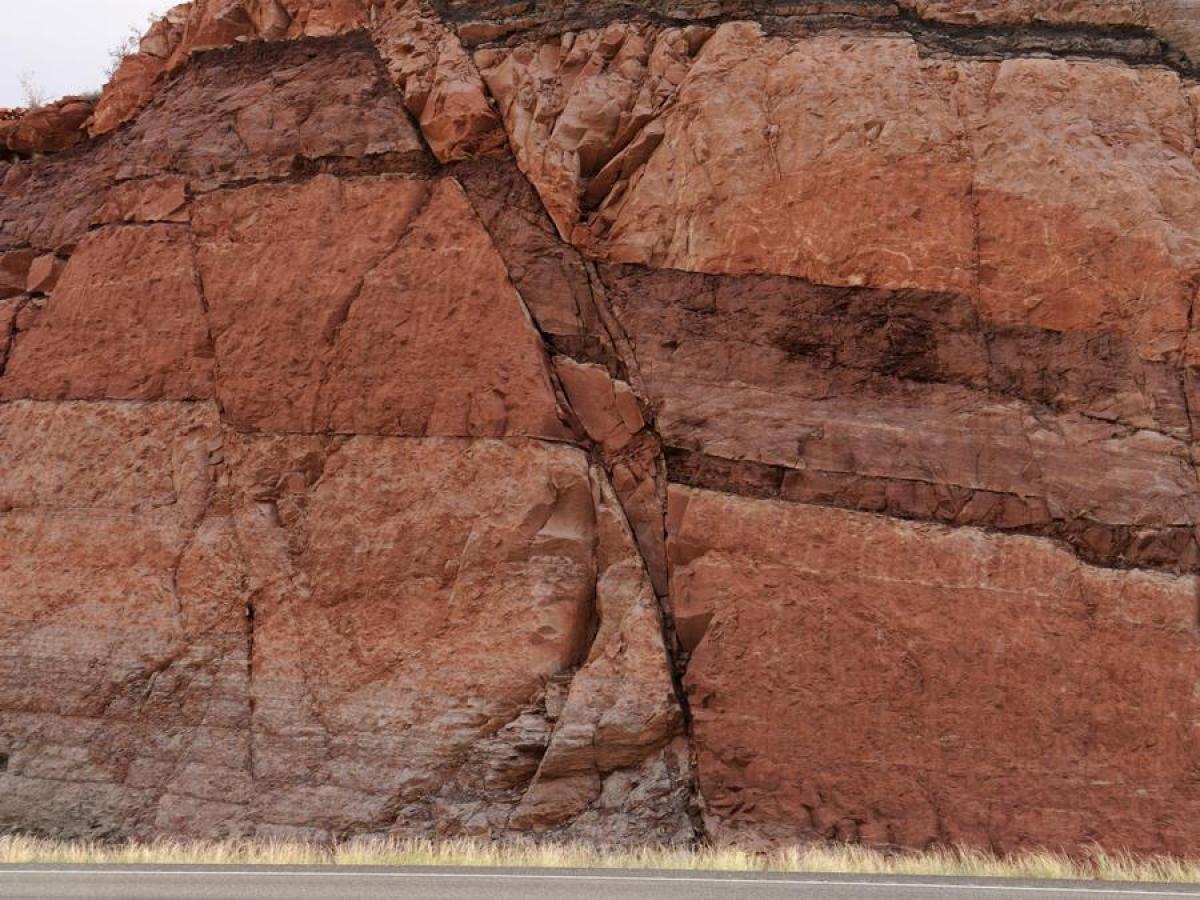Structure and Seismic
The stress, structure and seismic research group seeks to understand key tectonic processes in sedimentary basins, and identify and recover petroleum, geothermal and unconventional resources.

Our stress, structure and seismic researchers—petroleum geoscientists and engineers—integrate expertise in petroleum geomechanics, tectonics and neotectonics, structural geology, basin evolution and dynamics, and seismic interpretation.
The Stress, Structure and Seismic research group is particularly focused on:
- constraining contemporary and ancient crustal stress fields’ nature and origin
- predicting fault and fracture-controlled fluid flow away from the wellbore
- understanding how detachment zones control deformation styles in fold-thrust belts
- constraining intrusive and extrusive magmatism’s impact on hydrocarbon prospectivity.
-
Research impact
Our research ultimately benefits the entire mining and resources industry. Certain lines of enquiry, however, do have particular relevance for organisations working in specific areas. For example, research into:
- contemporary stress fields has a major impact on exploration for, and exploitation of, hydrocarbon reservoirs, especially in relation to wellbore stability, hydraulic fracture stimulation, structural permeability, and determining the nature of recent fault reactivation
- constraining the nature and origin of subsurface fluid flow through faults and fractures is of great importance to groundwater management, engineered geothermal systems, and basin-hosted-minerals exploration.
Our research is driven by real-world industry needs. The group’s highest priorities include:
- understanding plate-to-field-scale controls on the contemporary stress field and subsurface fluid pressures throughout the upstream petroleum industry’s lifecycle
- developing new techniques to predict hydraulically-conductive fracture networks in regions of little or no well control
- understanding deformation bands’ role in controlling uranium-rich fluid flow in sedimentary basins
- constraining the tectonic and oceanographic processes shaping rifted margins, subsequent to their formation during continental breakup
- developing models for magma transport through sedimentary basins to reduce uncertainties during hydrocarbon exploration and drilling.
Our researchers’ outputs are regularly embraced and applied in both the public and private sectors. For example, the group’s:
- work on in situ stress-related analyses has been a key driver for the increasing application of petroleum geomechanics in Australia
- produced industry-leading spin-out companies, including JRS Petroleum Research
- major ‘mapping’ projects—including the Australian Structural Permeability Map, Australian Stress Map, and South-East Asian Stress Map—have been used extensively in petroleum exploration and development, earthquake hazard assessment and geodynamic modelling.
-
Consulting services
We advise on, and lead, projects relating to:
- in-situ stress determination
- wellbore stability
- fracture stimulation and seal integrity
- seismic interpretation
- 2D and 3D structural modelling.
-
Our researchers
We have expertise across a wide range of areas. Many of our researchers are available to assist with research project supervision for Master of Philosophy and Doctor of Philosophy students.
Research team Expertise Dr Khalid Amrouch Structural geology; Tectonic evolution of sedimentary basins; Geomechanics and 4D stress characterisation Dr Mark Bunch Seismic geomorphology; Formation evaluation; Geological modelling Dr Rowan Hansberry Structural geology; Petroleum geomechanics; Geochemistry Professor Richard Hillis Petroleum geomechanics; Sedimentary basin tectonics; Mineral exploration Associate Professor Mark Tingay Petroleum geomechanics; Pore pressure prediction; Mud volcanoes -
Collaborations
We collaborate with various industry and government organisations, including:
